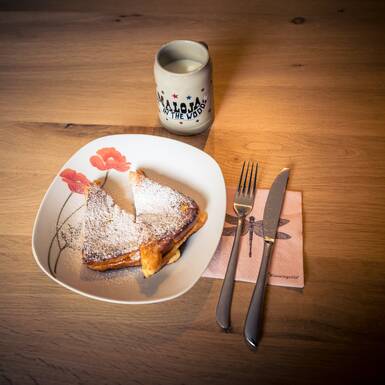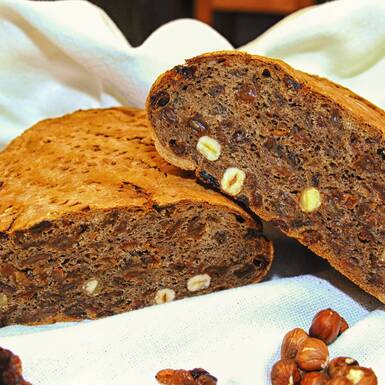- Cuisine
Delicious goose
Why it’s all about the goose, why goose is so popular in November, which tricks a professional chef reveals to cook goose successfully and how you can prepare a crispy St Martin’s goose step by step. The first culinary Saalbach story is all about the goose.
The 11th not only kicks off carnival. In fact, it is St Martin’s day, and here it’s celebrated with an atmospheric lantern procession with kids from the kindergartens and primary schools and the traditional St Martin’s goose. According to legend, modest Martin was to become a bishop against his will. He hid in a goose house. But the geese cackled so excitedly that he was found and ultimately anointed bishop. Old farmers have another explanation as to why goose comes on the table in November. Their story goes, “Before the start of the fasting period, which lasted from St Martin’s day to Christmas, cattle was slaughtered that would no be able to be fed during the winter due to financial reasons. That also included the geese that would be eaten at the St Martin's festival.”
It’s all about the goose
Robert Mair is a passionate chef. He runs the hotel Tiroler Buam in Vorderglemm, directly opposite the Schönleiten cable car, with his wife Sarah and has been cooking there for six years. He serves regional dishes with a modern touch at the restaurant here. The two have also been holding cooking courses in their own cookery studio since summer 2016. The professional chef reveals a traditional goose recipe for SAALBACH STORIES that you can recreate in your own kitchen.
“You can only create a good dish with fresh and high-quality basic ingredients. This also applies to goose. We only use free-range geese from Mostviertel, which are put out to pasture only a few weeks after they are born. You can taste the difference. The compact meat of their free-range geese, which weigh roughly 4.5 to 6 kilos, is more aromatic and leaner. We feel we have an ethical responsibility and refuse to buy fattened geese from places where animal welfare and housing isn’t appropriate,” Robert Mair, who uses no convenience products in his kitchen at all, emphasises.
Good goose needs a while
You need time when preparing goose as you need to calculate about one hour per kilo for roasting it. And should you decide to prepare it using the low temperature method, then you have to put the goose into the oven the evening before the feast where it then simply sizzles at about 70 to 80°C. “If you use this method, then you can’t put onion the filling as it will otherwise start to ferment at this temperature,” the chef warns, while taking the goose out of the oven to glaze it for the photo session. With honey lard – a mixture consisting of honey and butter in equal portions. “Good goose needs a while,” he says, laughing when he hears my stomach rumbling in eager anticipation.
Faithful companions of goose
Traditional side dishes for St Martin’s goose are red cabbage and potato dumplings. But you can also serve glazed chestnuts, fitting with the season. Champagne cabbage and napkin dumplings are also perfect culinary companions of goose. Sarah Mair is a sommelier, and while the goose is finally being taken out of the oven to be cut, the wine expert reveals, “A Pinot Noir goes best with goose, its fruitiness emphasises the aroma of the roast goose best.”
Robert Mair’s St Martin’s goose
Ingredients (for 4 to 6 people)
1 free-range goose from Mostviertel (oven-ready)
2 apples
2 untreated oranges
1 white onion
Thyme, marjoram, lovage, mugwort
Salt, pepper
Honey and butter for the glaze
Preparation
Cut off the protruding wings of the goose to prepare it for the roast and remove the kidney fat. Rub salt and pepper on the inside and outside. Cut the apples, oranges and onion into chunks, mix with the herbs and fill the goose.
Fill a roaster with water two centimetres high, put the cut-off wings inside and place the goose breast down. Pre-roast in the oven for 30 minutes at 220°C (convection heat), then reduce the heat to 160 - 180°C and, depending on the size of the goose, cook for at least two hours until crisp. Regularly baste the goose with its juices during the roasting process. In the last third of the cooking time, turn the goose breast upwards.Tip:Insert a fine fork into the leg, if you can move the bone easily and the juices run clear, then the goose is done. To make the sauce, remove the fat from the juice left in the roaster and refine it with orange juice and cranberries. Then reduce the sauce and let it thicken slightly. Now cut the goose and serve it in portions with the side dishes.











